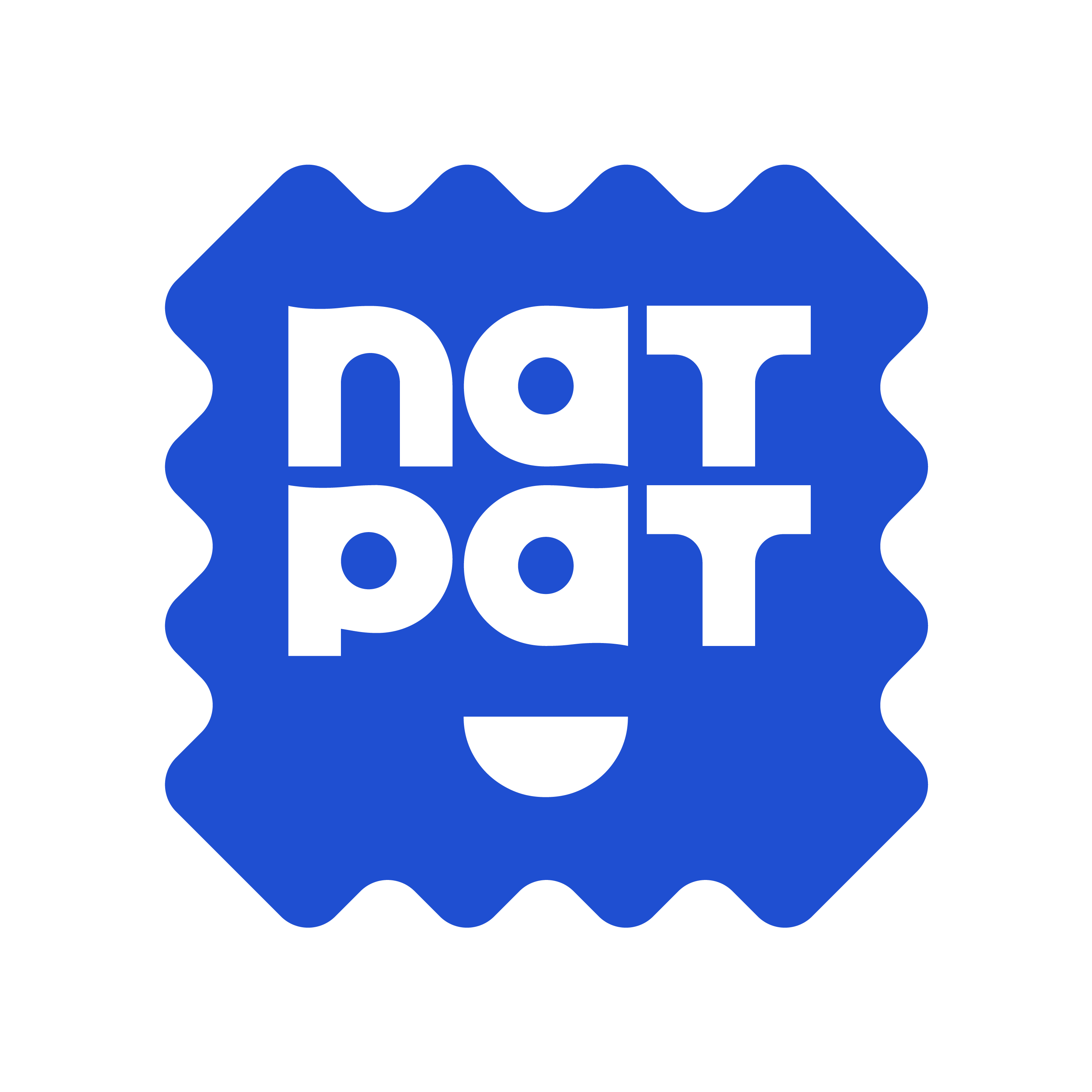The Nvidia AI Revolution: A Game-Changer for the Stock Market
5 min read
The Nvidia AI Revolution: A Game-Changer for the Stock Market
Over the past few years, Nvidia has become a household name, especially if you’re into tech or investing. Known initially for its high-performance graphics cards, Nvidia has made a massive leap into the world of artificial intelligence (AI) with its cutting-edge AI chip technology. This shift has not only boosted its market position but has also driven its stock through the roof. Let’s dive into Nvidia’s AI chip technology, who’s using it, how it’s changing the game, and what this means for its stock.
Nvidia’s AI Chip Technology: The Secret Sauce
Nvidia’s success in AI is rooted in its innovative GPU architecture, particularly the Volta and Ampere series. These chips are designed to handle complex AI computations, making tasks like machine learning (ML) and deep learning (DL) much faster and more efficient. Here’s a look at some of their star products:
Nvidia A100 Tensor Core GPU
The A100, based on the Ampere architecture, is a powerhouse. It’s built to handle everything from AI training to inference, making it a favorite for those working with natural language processing, recommender systems, and computer vision.
Nvidia DGX Systems
These AI supercomputers are equipped with multiple A100 GPUs and come with optimized software. They’re a go-to for serious AI research and enterprise applications.
Nvidia Jetson
Jetson is all about bringing AI to the edge—think robotics, autonomous machines, and intelligent video analytics. It packs a punch in a small package.
Nvidia Clara
Clara is Nvidia’s healthcare platform, using AI to revolutionize medical imaging, genomics, and drug discovery. It’s all about faster, more accurate diagnostics.
Who’s Using Nvidia AI Chips?
Nvidia’s AI technology is incredibly versatile, making it valuable across a range of industries. Here are some key players and how they’re using Nvidia’s chips:
Healthcare
In healthcare, Nvidia’s chips are transforming everything from imaging to drug discovery.
Siemens Healthineers: They use Nvidia AI to enhance diagnostic imaging, making MRI and CT scans faster and more accurate.
GE Healthcare: Nvidia GPUs power their AI-based software for imaging and diagnostics, helping clinicians make better decisions.
Automotive
The auto industry is buzzing with talk of self-driving cars, and Nvidia is at the heart of it.
Tesla: Their advanced driver assistance and autonomous driving features rely on Nvidia GPUs.
Mercedes-Benz: They’re using Nvidia to develop the MBUX Hyperscreen, an AI-powered infotainment system that offers personalized experiences.
Financial Services
From trading strategies to fraud detection, financial institutions are leveraging Nvidia’s AI tech.
JPMorgan Chase: Nvidia GPUs help them run complex simulations for risk analysis and high-frequency trading.
Mastercard: They use AI powered by Nvidia to detect and prevent fraud, keeping transactions secure.
Telecommunications
Telecom companies are tapping into Nvidia AI to boost network efficiency and improve customer experiences.
Verizon: Nvidia AI helps optimize their network infrastructure for better connectivity.
Ericsson: They’re using Nvidia GPUs for AI-driven network automation and management, essential for 5G performance.
Retail
Retailers are using Nvidia’s AI to personalize customer experiences, optimize supply chains, and drive sales.
Walmart: Nvidia AI analyzes customer data to personalize shopping and streamline supply chains.
Target: They use Nvidia GPUs to forecast demand and manage inventory more efficiently.
Nvidia’s Stock: Riding the AI Wave
Nvidia’s strategic pivot to AI has paid off big time, and it’s reflected in their stock performance.
Here’s why Nvidia stock has been on fire:
Strong Financial Performance
Nvidia’s numbers speak for themselves. Their revenue and profits have consistently smashed expectations, thanks to the booming demand for their AI chips.
Revenue Growth: In the fiscal year 2023, Nvidia reported a record $27 billion in revenue, up 50% from the previous year. The Data Center segment, which includes AI and cloud computing, has been a major driver.
Profit Margins: Nvidia’s gross margin is consistently above 60%, showcasing their strong pricing power and efficient operations.
Strategic Moves
Nvidia’s smart acquisitions and partnerships have bolstered their AI capabilities and expanded their reach.
Acquisition of Arm: Nvidia’s $40 billion deal to acquire Arm aims to enhance their AI capabilities, especially in the mobile and IoT markets.
Partnership with Microsoft Azure: By teaming up with Azure, Nvidia has made its AI tech more accessible, broadening its customer base.
Leading the Pack
Nvidia’s leadership in AI and constant innovation keep them ahead of the competition.
AI R&D: Nvidia’s heavy investment in AI research and development has led to groundbreaking products like the A100 GPU and DGX systems.
Developer Ecosystem: Their CUDA platform and software libraries have created a thriving developer ecosystem, driving widespread adoption.
Positive Vibes
The market’s enthusiasm for AI’s potential has been a major boost for Nvidia’s stock. Investors recognize the transformative power of AI, driving up demand for Nvidia’s chips.
Stock Splits
Nvidia has made its shares more accessible through stock splits, attracting a broader range of investors.
4-for-1 Stock Split: In July 2021, Nvidia executed a 4-for-1 stock split, making shares more affordable and increasing liquidity and trading volume.
Challenges and Looking Ahead
Despite the successes, Nvidia faces some hurdles that could impact its future growth:
Supply Chain Issues
The global semiconductor shortage could slow down Nvidia’s production and delay product deliveries.
Competition
Nvidia is up against tough competitors like AMD, Intel, and new AI chip startups. They’ll need to keep innovating to stay ahead.
Regulatory Hurdles
Nvidia’s acquisition of Arm is under scrutiny from regulators worldwide. Any delays or roadblocks could affect their growth plans.
Market Fluctuations
Stock market volatility and macroeconomic factors like inflation and interest rates could impact Nvidia’s stock performance. Investors need to keep an eye on these factors.
Nvidia’s AI chip technology is truly changing the game across various industries, from healthcare and automotive to finance and retail. This widespread adoption underscores the transformative power of their technology.
The impressive rise in Nvidia’s stock can be attributed to their strong financial performance, strategic acquisitions, market leadership, and the general market excitement about AI. However, the road ahead isn’t without challenges. Supply chain issues, competition, regulatory scrutiny, and market volatility are all factors that Nvidia will need to navigate.
As AI continues to evolve and become more integrated into our daily lives, Nvidia’s AI chip technology is likely to remain at the forefront, driving innovation and shaping the future. Investors and industry watchers alike will be keenly observing Nvidia’s next moves as they continue to push the boundaries of AI technology and deliver value to their customers and shareholders.
Over the past few years, Nvidia has become a household name, especially if you’re into tech or investing. Known initially for its high-performance graphics cards, Nvidia has made a massive leap into the world of artificial intelligence (AI) with its cutting-edge AI chip technology. This shift has not only boosted its market position but has also driven its stock through the roof. Let’s dive into Nvidia’s AI chip technology, who’s using it, how it’s changing the game, and what this means for its stock.
Nvidia’s AI Chip Technology: The Secret Sauce
Nvidia’s success in AI is rooted in its innovative GPU architecture, particularly the Volta and Ampere series. These chips are designed to handle complex AI computations, making tasks like machine learning (ML) and deep learning (DL) much faster and more efficient. Here’s a look at some of their star products:
Nvidia A100 Tensor Core GPU
The A100, based on the Ampere architecture, is a powerhouse. It’s built to handle everything from AI training to inference, making it a favorite for those working with natural language processing, recommender systems, and computer vision.
Nvidia DGX Systems
These AI supercomputers are equipped with multiple A100 GPUs and come with optimized software. They’re a go-to for serious AI research and enterprise applications.
Nvidia Jetson
Jetson is all about bringing AI to the edge—think robotics, autonomous machines, and intelligent video analytics. It packs a punch in a small package.
Nvidia Clara
Clara is Nvidia’s healthcare platform, using AI to revolutionize medical imaging, genomics, and drug discovery. It’s all about faster, more accurate diagnostics.
Who’s Using Nvidia AI Chips?
Nvidia’s AI technology is incredibly versatile, making it valuable across a range of industries. Here are some key players and how they’re using Nvidia’s chips:
Healthcare
In healthcare, Nvidia’s chips are transforming everything from imaging to drug discovery.
Siemens Healthineers: They use Nvidia AI to enhance diagnostic imaging, making MRI and CT scans faster and more accurate.
GE Healthcare: Nvidia GPUs power their AI-based software for imaging and diagnostics, helping clinicians make better decisions.
Automotive
The auto industry is buzzing with talk of self-driving cars, and Nvidia is at the heart of it.
Tesla: Their advanced driver assistance and autonomous driving features rely on Nvidia GPUs.
Mercedes-Benz: They’re using Nvidia to develop the MBUX Hyperscreen, an AI-powered infotainment system that offers personalized experiences.
Financial Services
From trading strategies to fraud detection, financial institutions are leveraging Nvidia’s AI tech.
JPMorgan Chase: Nvidia GPUs help them run complex simulations for risk analysis and high-frequency trading.
Mastercard: They use AI powered by Nvidia to detect and prevent fraud, keeping transactions secure.
Telecommunications
Telecom companies are tapping into Nvidia AI to boost network efficiency and improve customer experiences.
Verizon: Nvidia AI helps optimize their network infrastructure for better connectivity.
Ericsson: They’re using Nvidia GPUs for AI-driven network automation and management, essential for 5G performance.
Retail
Retailers are using Nvidia’s AI to personalize customer experiences, optimize supply chains, and drive sales.
Walmart: Nvidia AI analyzes customer data to personalize shopping and streamline supply chains.
Target: They use Nvidia GPUs to forecast demand and manage inventory more efficiently.
Nvidia’s Stock: Riding the AI Wave
Nvidia’s strategic pivot to AI has paid off big time, and it’s reflected in their stock performance.
Here’s why Nvidia stock has been on fire:
Strong Financial Performance
Nvidia’s numbers speak for themselves. Their revenue and profits have consistently smashed expectations, thanks to the booming demand for their AI chips.
Revenue Growth: In the fiscal year 2023, Nvidia reported a record $27 billion in revenue, up 50% from the previous year. The Data Center segment, which includes AI and cloud computing, has been a major driver.
Profit Margins: Nvidia’s gross margin is consistently above 60%, showcasing their strong pricing power and efficient operations.
Strategic Moves
Nvidia’s smart acquisitions and partnerships have bolstered their AI capabilities and expanded their reach.
Acquisition of Arm: Nvidia’s $40 billion deal to acquire Arm aims to enhance their AI capabilities, especially in the mobile and IoT markets.
Partnership with Microsoft Azure: By teaming up with Azure, Nvidia has made its AI tech more accessible, broadening its customer base.
Leading the Pack
Nvidia’s leadership in AI and constant innovation keep them ahead of the competition.
AI R&D: Nvidia’s heavy investment in AI research and development has led to groundbreaking products like the A100 GPU and DGX systems.
Developer Ecosystem: Their CUDA platform and software libraries have created a thriving developer ecosystem, driving widespread adoption.
Positive Vibes
The market’s enthusiasm for AI’s potential has been a major boost for Nvidia’s stock. Investors recognize the transformative power of AI, driving up demand for Nvidia’s chips.
Stock Splits
Nvidia has made its shares more accessible through stock splits, attracting a broader range of investors.
4-for-1 Stock Split: In July 2021, Nvidia executed a 4-for-1 stock split, making shares more affordable and increasing liquidity and trading volume.
Challenges and Looking Ahead
Despite the successes, Nvidia faces some hurdles that could impact its future growth:
Supply Chain Issues
The global semiconductor shortage could slow down Nvidia’s production and delay product deliveries.
Competition
Nvidia is up against tough competitors like AMD, Intel, and new AI chip startups. They’ll need to keep innovating to stay ahead.
Regulatory Hurdles
Nvidia’s acquisition of Arm is under scrutiny from regulators worldwide. Any delays or roadblocks could affect their growth plans.
Market Fluctuations
Stock market volatility and macroeconomic factors like inflation and interest rates could impact Nvidia’s stock performance. Investors need to keep an eye on these factors.
Nvidia’s AI chip technology is truly changing the game across various industries, from healthcare and automotive to finance and retail. This widespread adoption underscores the transformative power of their technology.
The impressive rise in Nvidia’s stock can be attributed to their strong financial performance, strategic acquisitions, market leadership, and the general market excitement about AI. However, the road ahead isn’t without challenges. Supply chain issues, competition, regulatory scrutiny, and market volatility are all factors that Nvidia will need to navigate.
As AI continues to evolve and become more integrated into our daily lives, Nvidia’s AI chip technology is likely to remain at the forefront, driving innovation and shaping the future. Investors and industry watchers alike will be keenly observing Nvidia’s next moves as they continue to push the boundaries of AI technology and deliver value to their customers and shareholders.
Photo Credit: Wikideas1, CC0, via Wikimedia Commons





